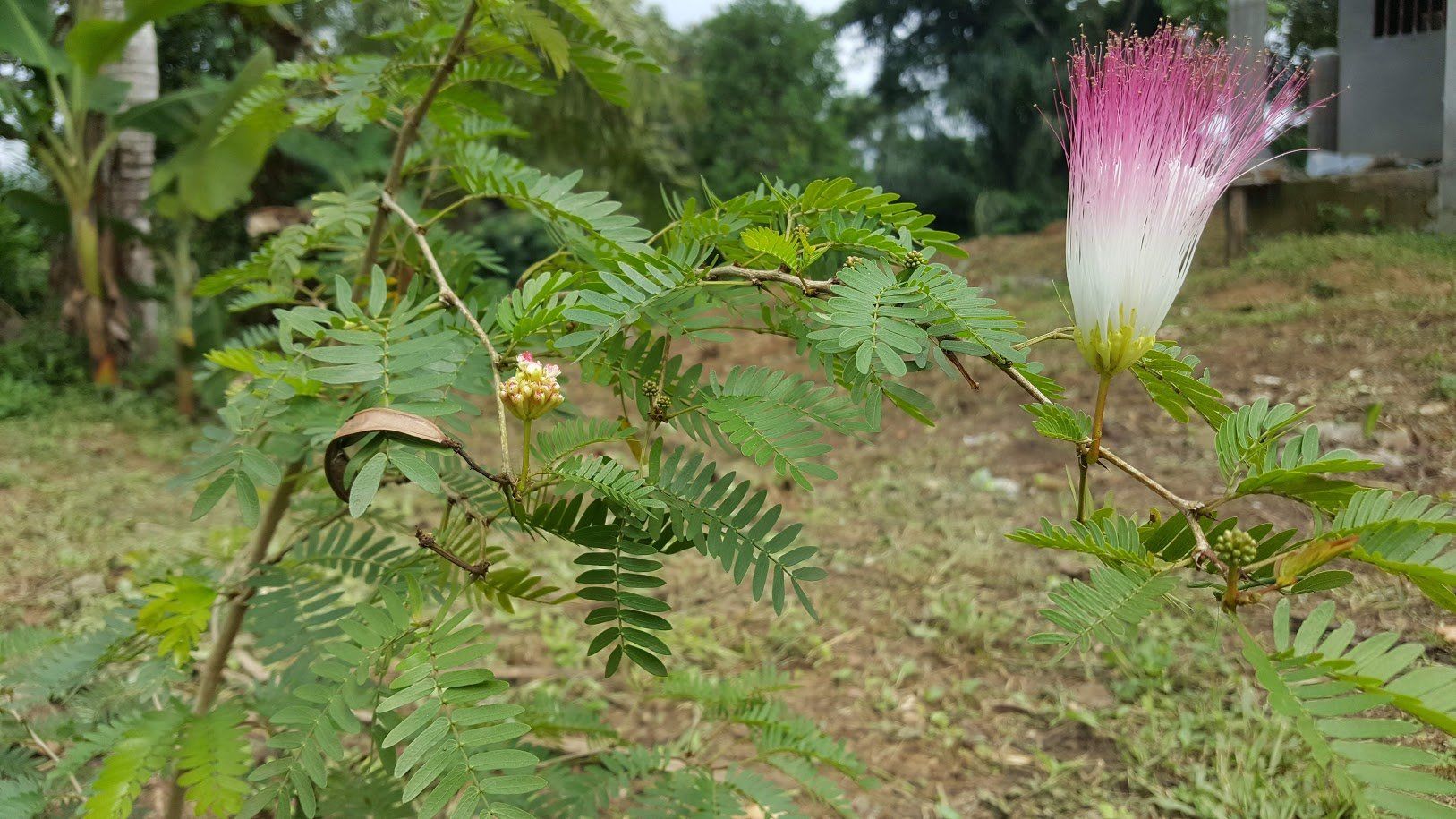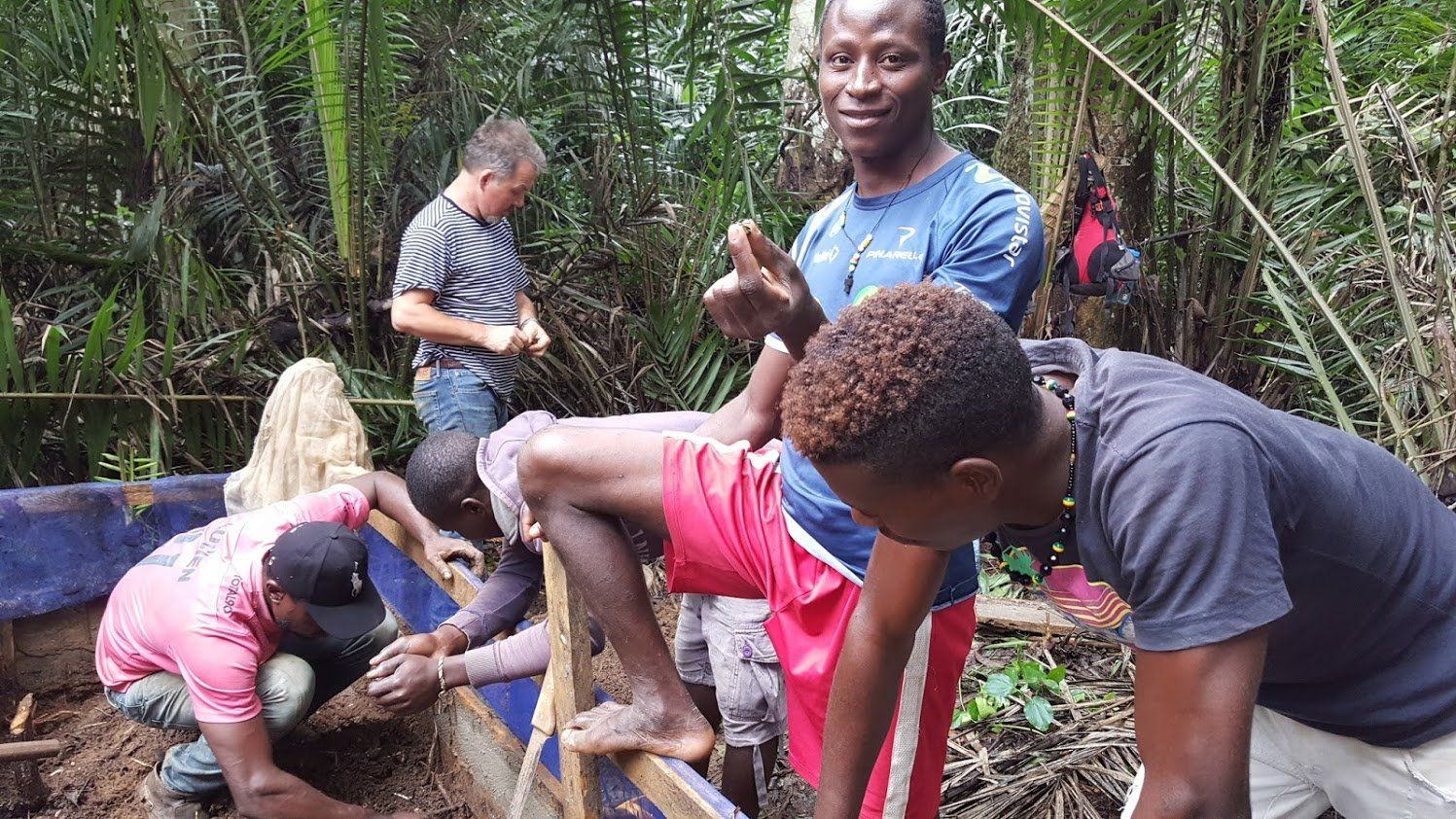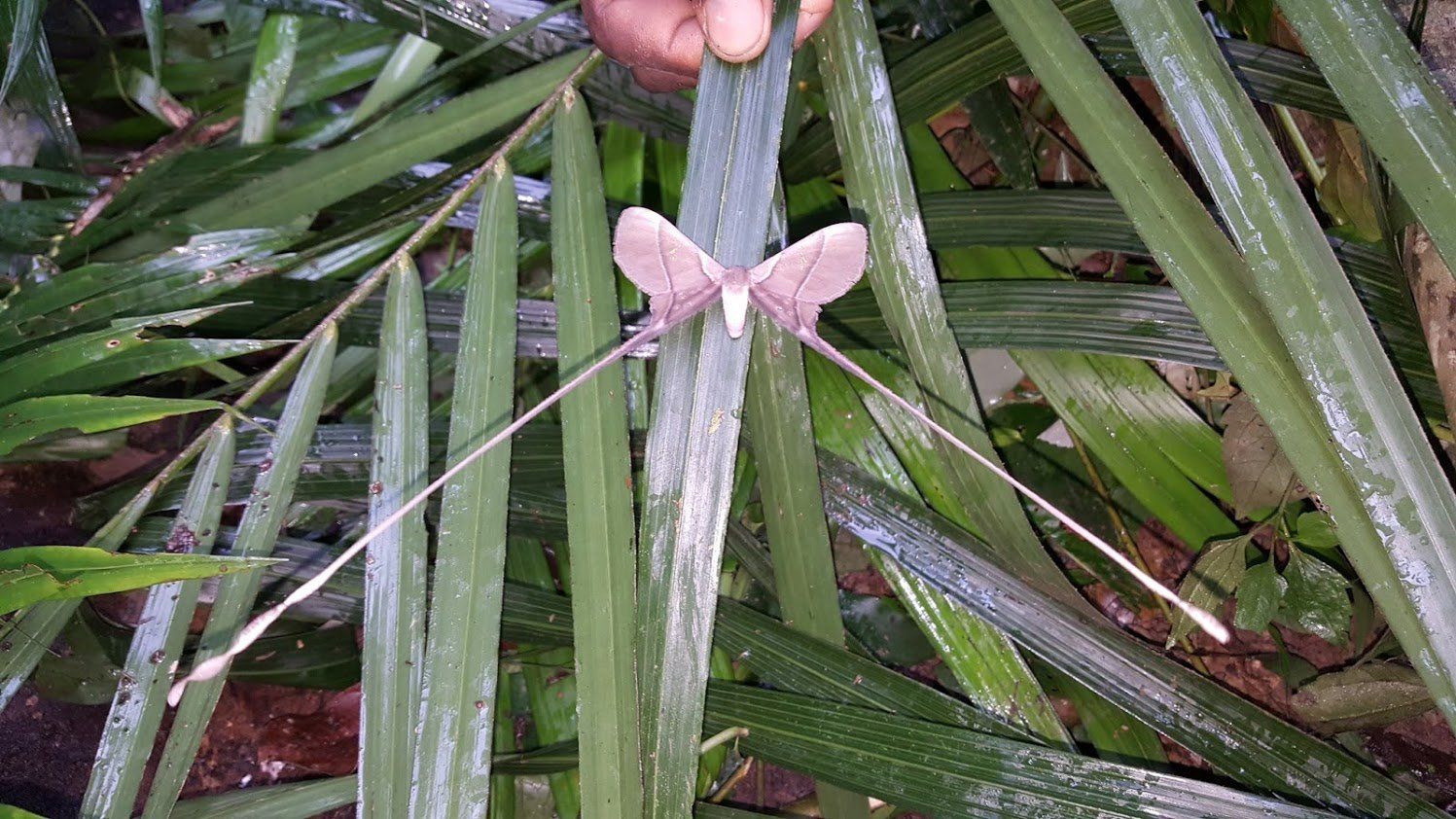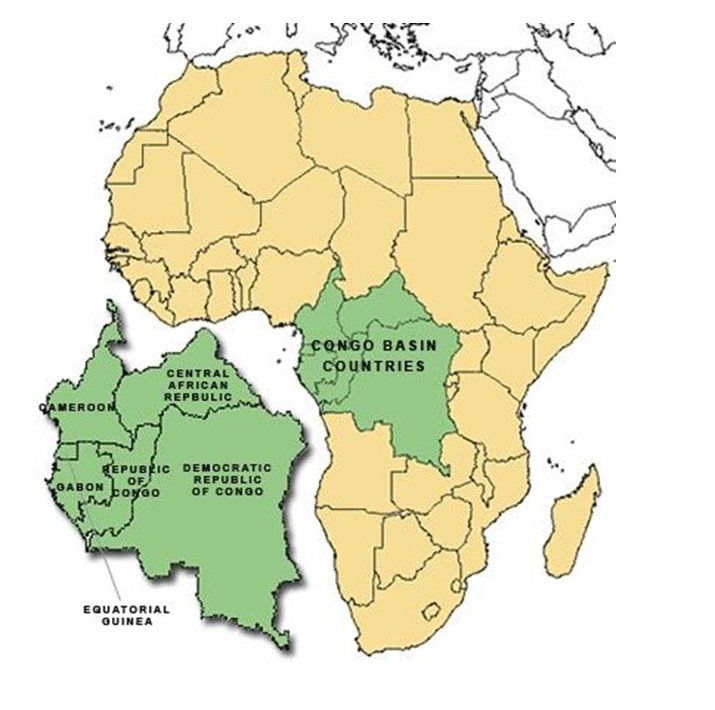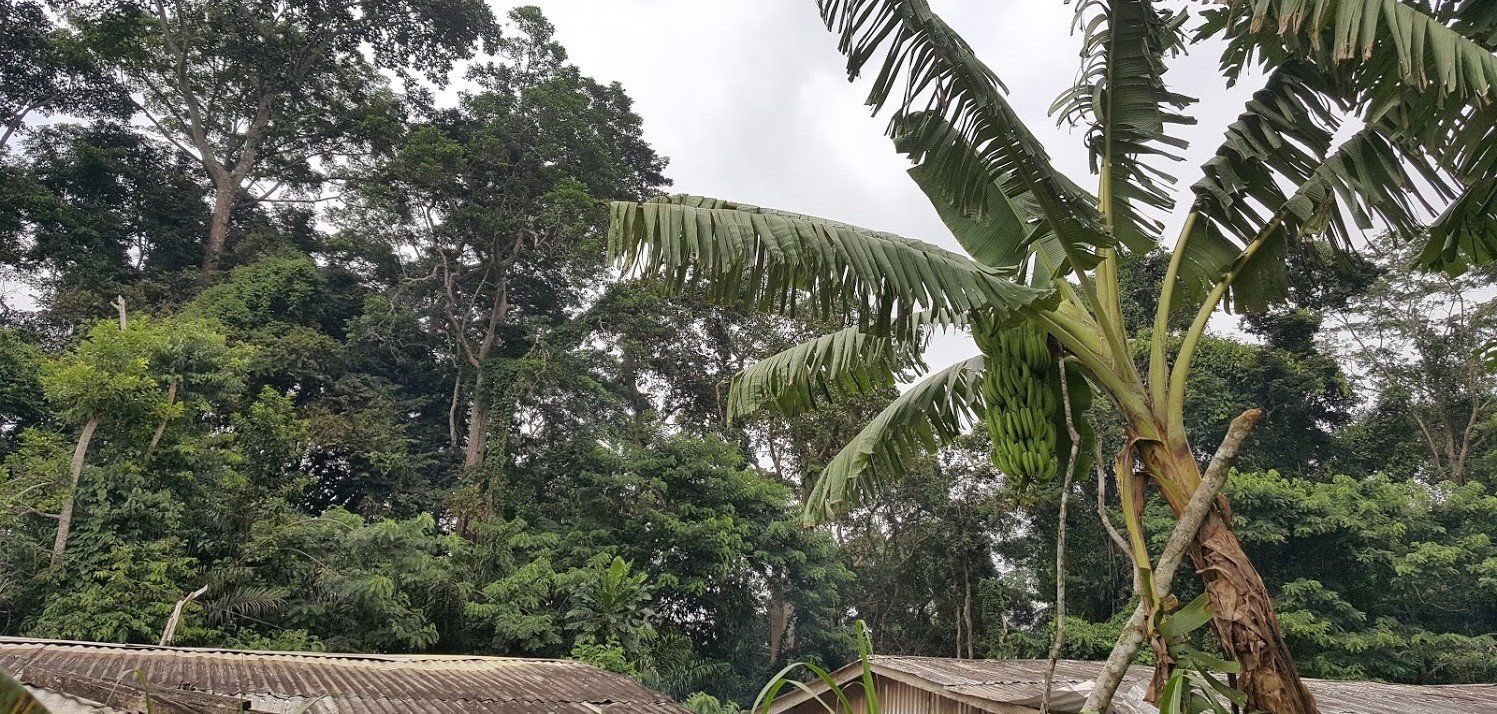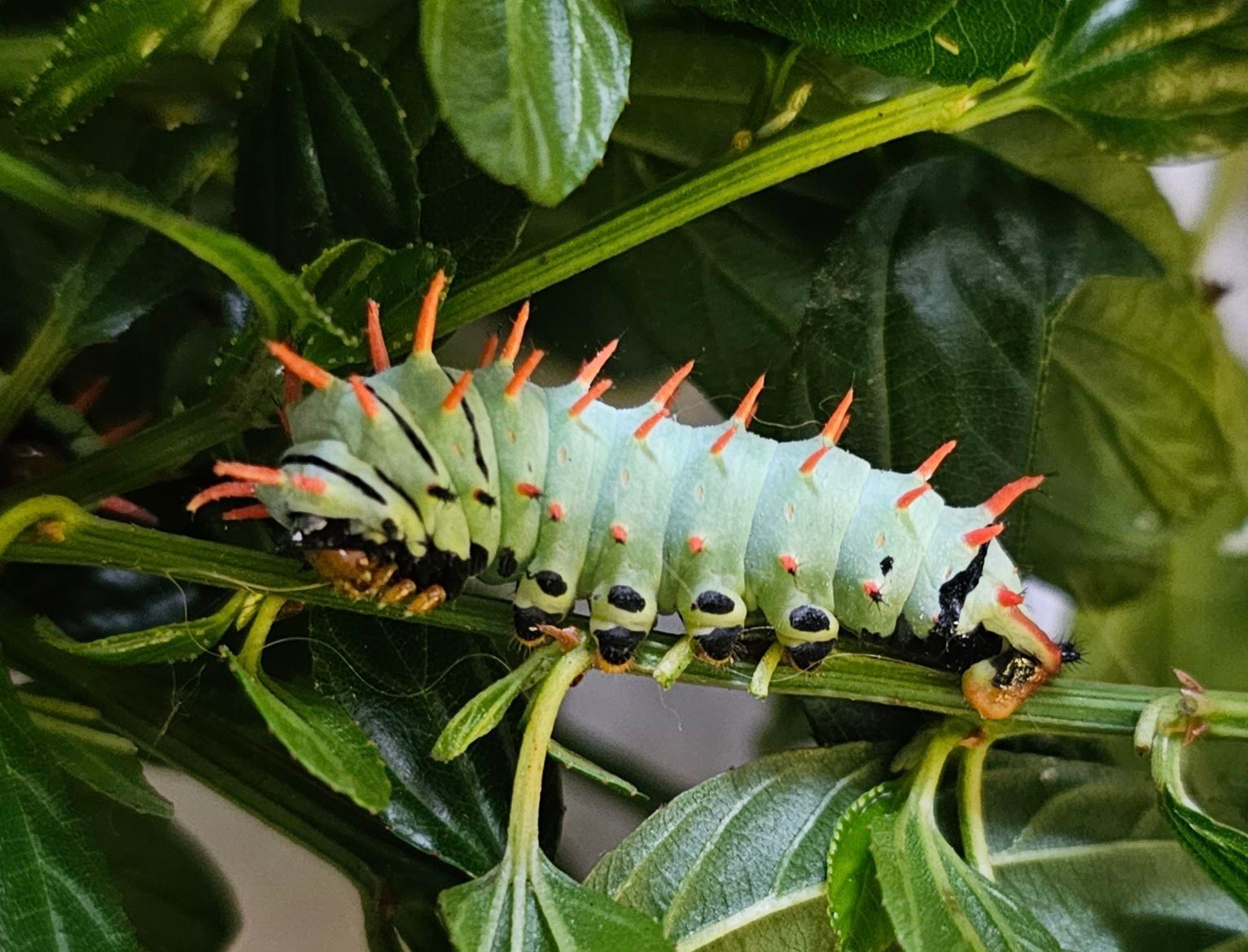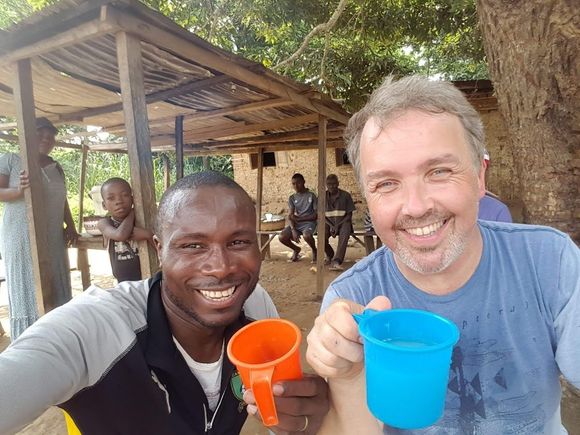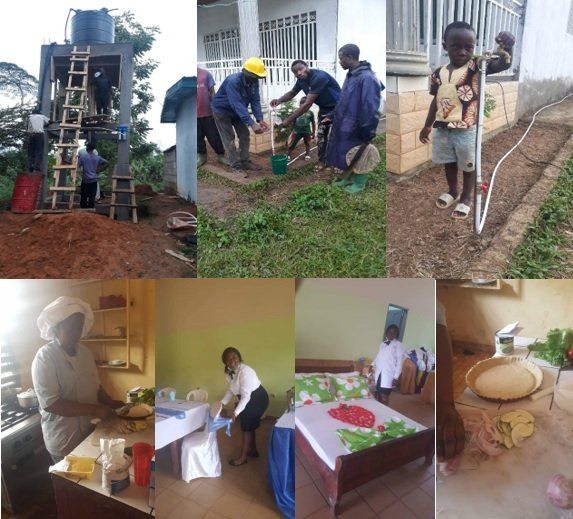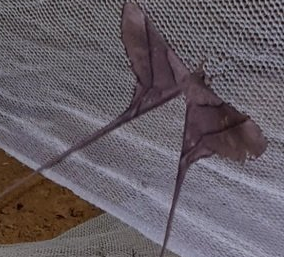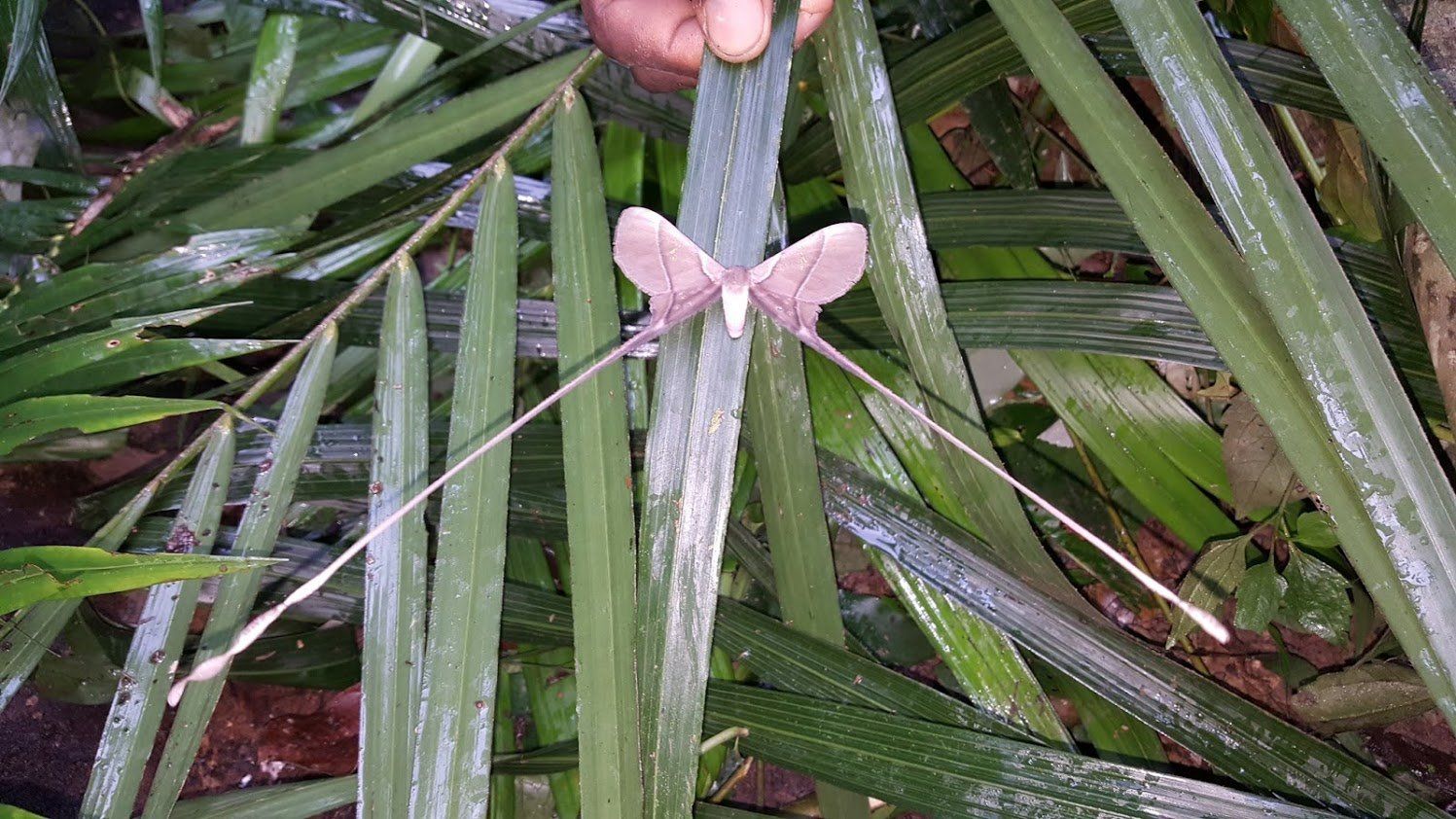Obout
Village is situated roughly 80 km southeast of Yaoundé and has a
population of about 500 people. Most dwellings are mud and straw brick construction
with compacted dirt floors and corrugated metal roofs. There is a pharmacy, a
local market, a central bar and eating place as well as a Catholic church and
school. Water is generally provided as bottled water transported into the
village regularly from Yaoundé. Water for washing clothes and for
personal hygiene purposes is most often pumped from one or more local wells. It
has high potential to be contaminated as sewers/latrines are simply pit
latrines dug locally behind groups of 3 to 5 homes.
2020
represented a very tough year for Cameroon, especially rural villages as a
result of the knock-on effect of Coronavirus measures taken by the government.
Bottled water supply chains were massively interrupted and rural villages were
without a normal supply of bottled water for a period of several months in the
worst cases. The incidence of both cholera and malaria spiked markedly with as
many as 40% of the inhabitants in Obout Village suffering from one or more of
these diseases including the families most closely associated with management
of the Cameroon Ark project.
Mr Lucien
Mballa Mbida, the local project coordinator for Cameroon Ark, was struck with a
very nasty bout of malaria that led to severe anemia in addition to the
eruption of mouth and oesophageal ulcers making it difficult for him to eat or
drink. His weight dropped to 50kg (from an average of 70 kg) and he was
hospitalized as an emergency measure being both severely malnourished and
dehydrated and with significant gut and liver inflammation. Cameroon Ark funds
collected from a combination of charitable donations in addition to revenues
from the sales of butterfly and moth specimens and livestock were used to pay
for the urgent medical care that was necessary to save Lucien’s life – this
included all necessary medication, food (including feeding tube) and care over
his stay. He remained in hospital under Dr’s care for a period of 8 weeks. While
we depleted all the project funds collected to date to save Lucien, without the
Cameroon Ark project, it is highly likely that Mr Mballa Mbida would not have
survived, leaving his wife and 5 children without their family head and the
village without one of its most impactful residents.
Despite the
extremely tough year, the Cameroon Ark project was highlighted in a very nice
article that appeared in the October 2020 edition of the online nature magazine
Jangala ( https://issuu.com/jangala/docs/251020/38
) starting from page 38 and
progressing to page 52 = CONSERVATION
and EDUCATION
.
Mr Mbida slowly returned to good health and by
October 2020 had returned to his normal average weight. Based on the events of
2020, we decided that an absolute priority for the Cameroon Ark project was the
purchase and installation of a clean-filtered water supply that would provide a
supply of clean, filtered water both to the main project building but also
access for members of the village. A deep well would be created and concrete
lined and capped. A 6m tower would be constructed to hold a 2m3 closed water
tank with level sensors and pumps to maintain a ready supply of water as water
was drawn from the vessel. Three output supply taps were installed to provide
access to clean water. This work was completed in late August 2021 with the
first water being drawn in early September. This addition to the facility and
the village will be transformational, life-changing and life-saving. The
funding for this work came through a lot of hard work across the team as well
as charitable donations = PROVISION
.
The initial well that was bored was 15m deep. This was then
lined in concrete and capped with necessary plumbing and pumps installed to
pump water from the well up to the 2m3 vessel situated on a 6m tower. Plumbing
from the tower to each of three different exterior taps was put in place for
access to clean drinking water.
The next
step in making the facility ready to receive paying guests, is to connect the
water supply to the plumbing of the building to supply showers, flushing
toilets and the kitchen sink with clean water. A water heater will be plumbed
to the showers to allow hot showers to be enjoyed. There will be a cost
associated with this work – expected to be in the range of €1500.
The
interior of the main Cameroon Ark building now has all flooring and internal
walls and ceilings installed. Basic electricity is available to the larger
living areas and needs to be extended to all rooms. Bedrooms will have ceiling
fans installed – this will act to prevent mosquitoes (as they dislike moving
air) as well as for achieving a lower room temperature to support comfortable sleeping.
Furniture
needs to be added as well as a fridge and cooker in the kitchen. There is also
conversation around adding an air conditioning unit in the main common areas
that would act to cool the full building when all doors and windows were
closed. The estimate for completing these works is about €5000.
Three guest
rooms are provided within the centre and there is provision for as many as 6
paying guests. One potential model that is being explored that would be fully
in-line with the mission of the project is a resident scientist model where
scientists can apply for grants of up to 6 months duration to allow them to
take up residence on-site with the support of the local team. This would
provide a base and facilities from which high-quality research could be
conducted. We will seek donations of enabling laboratory equipment such as
dissecting microscopes and field pinning equipment to support any entomological
field research.
Once the
internal work is done (aiming for spring/summer 2022), the possibility of welcoming
paying guests becomes a reality. Sorelle Eyingo (Lucien Mballa Mbida’s wife)
has recently completed a Diploma in Hospitality and Catering such that she will
become the primary cook and residential manager for the facility as guests
start to stay. Her educational costs were covered again by received funds from
the Cameroon Ark project.
This represents part of the project goals = EDUCATION.
Four other significant wins in 2021 are as
follows:
1) A commitment from a group of
entomologists in Germany, to purchase 1000 moth specimens every month collected
right on the Cameroon Ark site, across the calendar, as part of a biodiversity
and seasonal tracking project to understand the local biodiversity of moth
species across broad classes as well as the seasonal changes in local
prevalence. This is necessary and important work to understand the impact of
local deforestation and loss of habitat on biodiversity. The project was
enabled by the quality of the work being done by Lucien and team and by the
fact that we provide GPS data with all specimens enabling tracking of
collecting sites to within a 100m2 area making all specimens scientifically
valuable. This project has led to a monthly salary for the project amounting to
€200/month.
This represents all four of the project goals – PROVISION
, as
well as CONSERVATION
, DISCOVERY
and EDUCATION
.
2) A potentially new (to science) moth
species in the family Saturniidae (giant silkmoths) being identified with a
full larval life cycle described.
We are waiting for pupae to hatch at this time.
If they appear to be consistent with the single image of the original female
moth (above) that produced eggs then we will have identified a brand-new
species and we will have the honour of naming the species. This is certainly a
Biblical as well as scientific discipline. Along with this, a second,
closely-related species ( Gonimbrasia rhodophila
), has also been
discovered and described by us although a German research group has just
published a short paper on this species too effectively beating us to the
publication. It highlights just how relevant and the work being conducted by
the project is along with its timeliness.
Finding a new species and new biology is the DISCOVERY
part of the project. Along with the above, multiple life cycles have been
described and interesting biology uncovered. Through the use of social media,
awareness of the Congo Basin Forest and its natural resources has been raised
as well as the challenges facing this area. This forms a vital part of CONSERVATION
efforts – raising awareness or EDUCATION
.
3) Lucien has begun raising local caterpillar species as his
training in animal husbandry towards developing another revenue generating
income stream. He has done this under my direction and the goal would be to
eventually produce local endemic species as pupae for sale to museums,
butterfly parks and scientists – there is literally a wealth of undescribed
biology within the Congo Basin Forest that is disappearing as we speak.
= EDUCATION & CONSERVATION & PROVISION
4) Lastly, the Cameroon Ark project
contributed with images, life cycle information and cultural dietary
preferences information as part of a comprehensive booklet (48 pages) that is
now in its final edits before going to press and entitled:
“ Edible caterpillars and their foodplants in Kongo Central Province,
Democratic Republic of Congo
” Author: Paul Latham = EDUCATION & DISCOVERY.
